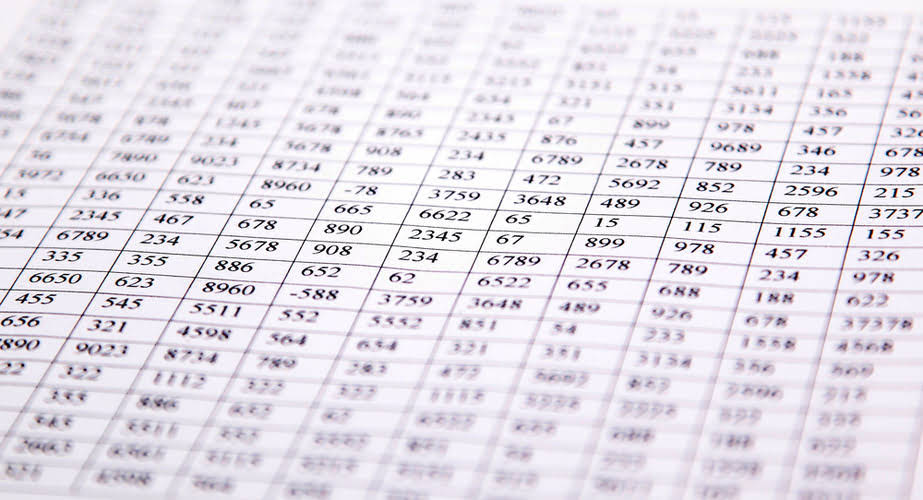Content
- What Are The Three Components Of Manufacturing Costs?
- Is Your Business Ready For An Erp System
- Service Entity Use Of A Job Order Costing System
- Which Cost Is Period Cost?
- Which Is The Best Way To Allocate Nonmanufacturing Expenses?
- 8 Explain How A Job Order Cost System Applies To A Nonmanufacturing Environment
- What Are Direct Materials?

Multiple types of overhead are included to calculate the predetermined overhead rate. The predetermined overhead rate is multiplied by the actual allocation base incurred by a job to find ______.

Tesla’s income statement illustrates how overhead costs, as well as other operating expenses, can impact a company’s profitability. Also, the cost of debt, shown as interest expense, was a contributing factor in the company’s loss in both periods.
What Are The Three Components Of Manufacturing Costs?
Indirect costs are not directly involved with the costs incurred in the creation of a product. Learn the definition Nonmanufacturing Overhead Costs of indirect costs, view examples, and explore how indirect costs vary for different companies.
- The service department that serves to the highest number of departments is the first department to begin allocation.
- So you would divide the costs out proportionally, with $500 allocated to the smallest restaurant and $750 allocated to the larger restaurants.
- An actual overhead rate is not known until the end of the period.
- For instance, fixed overhead costs consist of property taxes, insurance premiums, depreciation and nonmanufacturing employee salaries, according to Accounting Tools.
Non-manufacturing costs do not form part of cost of goods sold, but are expensed out as period costs in the period of incurrence. Non-manufacturing costs include those costs that are not incurred in the production process but are incurred for other business activities of the entity. These costs do not specifically contribute to the actual production of goods but are essential to ensure overall functioning of the business. Direct labor cost includes the wages and all other monetary benefits paid out to those personnel who work in the manufacturing process and whose work can be directly traced to the products manufactured. In a garment factory, the sum of all the wages and benefits paid to pattern cutters, tailors, sewing machine operators, folders and packers is an example of direct labor cost. PERIOD COSTS – costs that do not form part as cost of the products.
Is Your Business Ready For An Erp System
When companies have returns, they must calculate net sales, which is revenue minus sales returns and allowances. The result, or net sales, is recorded at the top line of the income statement in place of revenue, which is typical for retailers. The gross profit is calculated by subtracting a company’s cost of goods sold from its revenue. When compared to a departmental approach, using activity-based costing results in ______ overhead rates.

Indirect costs are resources used for more than one product. For a restaurant, direct costs would be all the ingredients in the food, plus all the labor to make and serve the food.
Service Entity Use Of A Job Order Costing System
For example, wages and related benefits of employees who operate machinery to produce valves represent direct labor costs for a Company. We can see that SG&A was listed under operating expenses and not included in gross profit. The breakdown of the company’s costs on the income statement is important in determining where profitability exists and where it does not. Only direct labor, involved in manufacturing a company’s goods, is included in cost of goods sold or cost of services and ultimately gross profit.
- Variance analysis is used in non -production-oriented companies such as service businesses.
- It is likely that you will have to estimate the cost of these activities.
- The historical data indicate that R&D costs, as measured by employment and funding, have generally been exempt from overhead cost reduction pressures.
- One Comment on Treatment of non-manufacturing costs 1.
- The fabric, buttons, thread, packing boxes etc. used by a manufacturer of garment products are all examples of direct materials.
- The tax assigned to each product is not used in the gross profit calculation but is embedded in COGS and indirectly impacts gross profit.
Whereas, variable direct manufacturing overhead costs include indirect labor, indirect material and utilities. Though most of these costs are self-evident, indirect material costs are unique because these costs are not essential to the physical production of the product. Nonmanufacturing costs are necessary to carry on general business operations but are not part of the physical manufacturing process. These costs are represented during a period of time and are not calculated into the cost of good sold.
Which Cost Is Period Cost?
As with any financial metric, gross profit and the costs of a company should be compared to other companies within the same industry. Sales returns impact revenue and cost of goods sold, ultimately affecting gross profit. Whenever a product is returned, and the customer is reimbursed, it gets recorded in an account called sales returns and allowances. Based on this information, the amount of overhead allocated to a job that used 300 direct labor hours is $_________. If the mark-up percentage is 40%, the job will sell for $________. To calculate the unit product cost using the job cost sheet ______ by the number of units produced.
Overhead costs are not included in gross profit, except possibly overhead that’s directly tied to production. Predetermined manufacturing overhead cost and nonmanufacturing cost.
Which Is The Best Way To Allocate Nonmanufacturing Expenses?
We use the term nonmanufacturing overhead costs or nonmanufacturing costs to mean the Selling, General & Administrative (SG&A) expenses and Interest Expense. Under generally accepted accounting principles , these expenses are not product costs. Under absorption costing, companies treat all manufacturing costs, including both fixed and variable manufacturing costs, as product costs. The product costs would include direct materials, direct labor and overhead. The period costs would include selling, general and administrative costs. Add together your total direct materials costs, your total direct labor costs and your total manufacturing overhead costs that you incurred during the period to determine your total product costs.

The term manufacturing costs usually refers to material used, direct labor incurred, and overhead incurred in a manufacturing business. Material used, direct labor, and manufacturing overhead at the time incurred are not expenses; rather they incurred costs. For apportionment of overheads, there are no hard and fast rules for which basis of apportionment to use except that whichever method is used to apportion overheads, it must be fair. Unlike direct cost, indirect cost is usually allocated to cost objects and is not directly traced to cost objects. Cost object is defined as item that is assigned separate measure of cost. To facilitate allocation of overhead cost, overhead cost that have common allocation base is pooled together and is known as cost pool.
As stated earlier, factory overhead, including labor, might be included but will be assigned a cost per product. Administrative costs such as secretaries and accountants, legal positions, janitorial workers, analysts, and other non-production jobs would not have their wages included in cost of goods sold.
Being a professional blogger I like to share my knowledge regarding accounting, finance, investing,bonds and other related topics. In addition to i am a professional accountant in a Multinational company. All materials on termscompared.com is subject to copyright and cannot be copied and republished without proir written permission. Depreciation and maintenance of equipment and buildings outside of manufacturing.
- Alright, we concede the point that utilities are sometimes mixed, too, as well as the indirect materials.
- Table 1.2 “Manufacturing Costs at Custom Furniture Company” provides several examples of manufacturing costs at Custom Furniture Company by category.
- INDIRECT COSTS – refer to costs that are not directly traceable to a cost object.
- Service cost centers are not directly involved in making products.
Production overhead, or usually refer to as manufacturing overhead, is recovered by absorbing them into the cost of a product. Absorption costing means that all of the manufacturing costs are absorbed by the units produced. In other words, the cost of a finished unit in inventory will include direct materials, direct labor, and both variable and fixed manufacturing overhead. As a result, absorption costing is also referred to as full costing or the full absorption method.
8 Explain How A Job Order Cost System Applies To A Nonmanufacturing Environment
When finished goods are sold, the cost of goods sold is transferred to the income statement and matched with the sales revenue. As product costs are assigned to inventory accounts initially, sometimes they are called https://www.bookstime.com/ inventoriable costs. Product costs are costs that are incurred to create a product that is intended for sale to customers. Product costs include direct material , direct labor , and manufacturing overhead .
Cost of goods sold includes direct materials, direct labor, and variable and allocated fixed manufacturing overhead. Although selling costs and general and administrative costs are considered nonmanufacturing costs, managers often want to assign some of these costs to products for decision-making purposes. For example, sales commissions and shipping costs for a specific product could be assigned to the product. GAAP, only product costs can be assigned to products. However, as we noted earlier, managerial accounting information is tailored to meet the needs of the users and need not follow U.S.
What Are Direct Materials?
As a result, direct costs are factored into gross profit through COGS or COS. In this article, we explore the relationship between gross profit, cost of goods sold, cost of services, overhead, and labor costs. Materials that become an integral part of the finished product and that can be easily traced to it are called direct materials. For example wood is a direct material for the manufacturers of furniture. Lime stone is direct material for the manufacturers of cement. Direct materials usually consists of a significant portion of total manufacturing cost. Direct materials cost includes all materials and supplies that are used as input in the production process and whose usage can be directly traced to the final product manufactured by the entity.
Non-manufacturing costs are not included in manufacturing overhead account but are charged directly to income statement. Examples of non-manufacturing expenses are sales commission, advertising expenses, rent of office building, and depreciation on the equipment used in office etc. Product cost refers to the costs incurred to create a product. These costs include direct labor, direct materials, consumable production supplies, and factory overhead. Product cost can also be considered the cost of the labor required to deliver a service to a customer.
